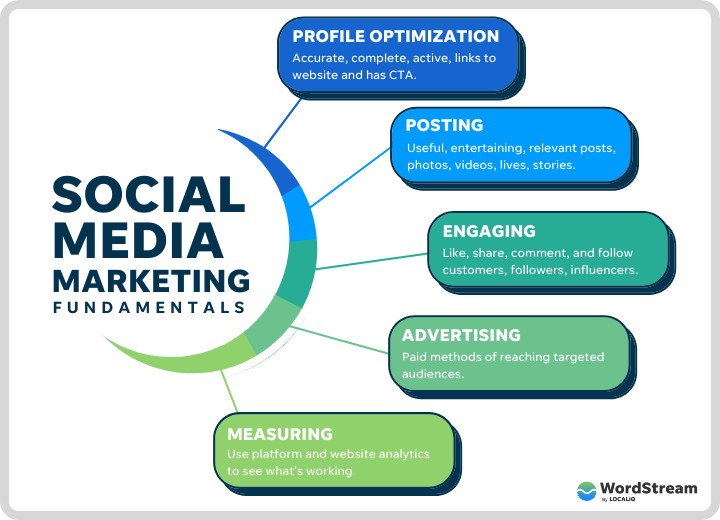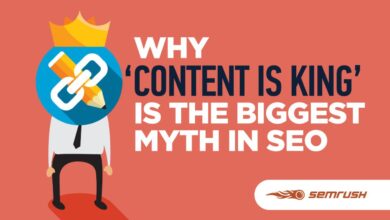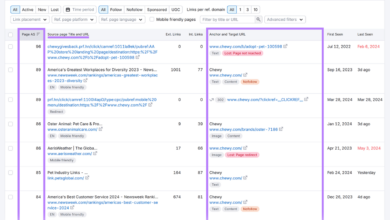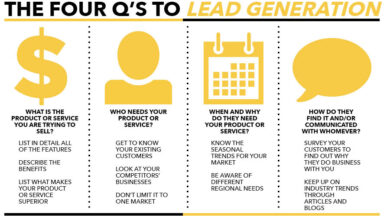
B2B Social Media Marketing A Comprehensive Guide
B2B social media marketing is more than just posting pretty pictures. It’s a strategic approach to connecting with potential clients, building relationships, and driving business growth in the professional sphere. This guide dives deep into the intricacies of B2B social media, from defining its unique characteristics to mastering the tools and strategies for success.
We’ll explore how to tailor your social media presence to resonate with your target audience, identify the most effective platforms for your industry, and craft engaging content that fosters meaningful connections. We’ll also cover crucial elements like measuring results, building communities, and using the right tools to optimize your efforts.
Defining B2B Social Media Marketing
B2B social media marketing is a strategic approach to connect with potential and existing business clients on social media platforms. Unlike consumer-focused strategies that prioritize entertainment and brand awareness, B2B social media marketing prioritizes building relationships, showcasing expertise, and driving leads and revenue. It’s a highly targeted and measurable form of marketing, often focused on specific industry niches.This approach is distinct from consumer-focused strategies, where the goal is broader brand recognition and emotional engagement.
B2B marketing leverages social media to establish thought leadership, build trust, and facilitate direct communication between businesses. It’s about demonstrating value and solving problems for other businesses, ultimately driving tangible business outcomes.
Key Objectives and Goals of B2B Social Media Marketing Campaigns
Effective B2B social media campaigns aim to achieve specific objectives and goals that align with overall business objectives. These typically include generating leads, nurturing relationships with potential clients, increasing brand awareness and recognition within the target market, driving website traffic, and establishing thought leadership. Furthermore, they can improve customer service response times, allowing for faster problem-solving.
Examples of Successful B2B Social Media Campaigns
Numerous B2B companies have successfully leveraged social media to achieve significant results. For instance, companies like HubSpot, a marketing software provider, have built a strong online presence by consistently sharing valuable content, participating in relevant industry discussions, and actively engaging with their audience. Similarly, Salesforce, a CRM giant, has built a loyal community around its products through engaging posts, interactive webinars, and expert-led discussions.
These campaigns often showcase industry expertise, demonstrating thought leadership, while also effectively marketing products and services. Successful B2B social media campaigns consistently deliver high-quality, informative content, facilitating valuable interactions with their target audience.
Role of Social Media Platforms in Building and Maintaining Business Relationships
Social media platforms play a crucial role in building and maintaining business relationships in B2B contexts. They provide a channel for businesses to directly connect with potential clients, exchange information, build trust, and nurture relationships over time. Platforms like LinkedIn, Twitter, and even Instagram offer opportunities for targeted networking, thought leadership discussions, and direct communication, all key components of successful B2B relationship management.
These platforms enable the sharing of valuable insights and resources, which fosters credibility and builds trust.
Key Differences Between B2B and B2C Social Media Strategies
| Platform | B2B Strategy | B2C Strategy | Key Differences ||—|—|—|—|| LinkedIn | Content focused on industry insights, thought leadership pieces, and company updates. Networking with relevant professionals, and participation in industry groups. | Content focused on emotional engagement, brand building, and entertainment. Focus on building a community around the brand. | B2B strategies are more focused on providing value, building relationships, and driving business results.
B2C strategies are more focused on emotional engagement, brand building, and entertainment. || Twitter | Sharing industry news, engaging in relevant conversations, and promoting thought leadership content. Responding to industry queries. | Sharing updates, engaging in conversations, and promoting brand-related content. Responding to customer inquiries and complaints.
| B2B uses Twitter for professional networking and information sharing, while B2C utilizes it for brand engagement and direct customer interactions. || Facebook | Utilizing groups for industry discussions and engagement, promoting events and webinars. | Utilizing pages for brand awareness, showcasing products, and engaging with customers through posts and contests. | B2B uses Facebook for networking, industry updates, and community building; B2C uses it for brand building, direct customer interaction, and community engagement.
|| Instagram | Sharing visually appealing content related to industry trends, showcasing products, and promoting events. | Sharing visually appealing content related to products, lifestyle, and trends. | B2B utilizes Instagram for showcasing expertise and promoting brand awareness through visual content; B2C uses it to build brand awareness, showcase products, and build community. |
Platforms for B2B Social Media Marketing
B2B social media marketing is no longer a supplementary tactic; it’s a cornerstone of successful strategies. Understanding the nuances of each platform is critical to achieving optimal ROI. Choosing the right platform for your target audience is key to maximizing your impact and avoiding wasted effort. Effective B2B social media strategies require careful consideration of which platforms best align with your business goals.A deep dive into various social media platforms reveals that certain platforms excel at specific B2B marketing objectives.
Different platforms offer distinct advantages in terms of audience engagement and content dissemination. Recognizing these differences empowers businesses to strategically deploy resources and maximize their reach within their industry and market segment.
Identifying Effective B2B Social Media Platforms
Different social media platforms cater to diverse needs and preferences. A strategic approach requires careful selection based on the specific goals and target audience. Understanding the strengths and weaknesses of each platform is essential for achieving optimal results.
- LinkedIn: LinkedIn stands out as a premier platform for B2B networking and professional development. Its professional focus allows for in-depth discussions, thought leadership content, and targeted advertising campaigns. The platform’s robust search functionality and industry groups enable businesses to connect with their ideal clients and partners, building stronger relationships. Case studies show that LinkedIn is particularly effective for lead generation and building brand authority within specific niches.
- Twitter: Twitter excels at disseminating timely information, breaking news, and fostering rapid conversations. Its real-time nature makes it ideal for engaging in trending discussions relevant to your industry. Short-form content, such as updates and insightful quotes, works particularly well. Its ability to engage in quick responses to industry events and trending topics makes it a valuable tool for building brand awareness and thought leadership.
B2B social media marketing can be tricky, but it’s crucial for reaching the right audience. Thinking about how restaurant marketing is done right is a great place to start. A comprehensive checklist like restaurant marketing done right complete checklist can help you apply similar strategies to your own B2B social media efforts. Ultimately, successful B2B social media hinges on understanding your target audience and creating engaging content.
- X (formerly Twitter): X (formerly Twitter) retains its significance for quick updates and engagement with industry leaders. The platform’s emphasis on concise communication and trending topics is particularly valuable for disseminating industry insights and breaking news. Short-form content, such as updates, engaging polls, and concise summaries of industry reports, is well-suited to this platform.
- Facebook: Facebook, while less prominent for pure B2B engagement, still holds value. Businesses can leverage Facebook groups to connect with industry peers, share content, and foster discussions. It can also serve as a complementary platform for sharing more visual content and interacting with clients. Consider Facebook for visually engaging content such as infographics or short videos that showcase your brand’s personality.
- Instagram: Instagram’s visual nature offers a unique opportunity for B2B businesses to showcase products or services. High-quality images and engaging videos can convey brand personality and build visual recognition. Businesses can use this platform to highlight case studies, behind-the-scenes content, and employee spotlights. Use it for product demonstrations, behind-the-scenes glimpses into company culture, and visual explanations of complex topics.
- YouTube: YouTube is invaluable for in-depth content. Businesses can create tutorials, webinars, or product demonstrations to provide valuable resources and showcase their expertise. This platform allows for longer-form content, ideal for detailed explanations, demonstrations, or industry-specific webinars.
Comparative Analysis of B2B Social Media Platforms
A comprehensive comparison table highlighting key features and potential drawbacks is presented below:
| Platform | Target Audience | Content Formats | Advantages/Disadvantages |
|---|---|---|---|
| Professionals, decision-makers, industry leaders | Articles, industry insights, thought leadership pieces, company updates, job posts | Excellent for networking, lead generation, brand building. Can be overwhelming for casual users; high level of professionalism required. | |
| Twitter/X | Industry professionals, thought leaders, news junkies | Short-form updates, news, engaging questions, industry insights, quick responses to trending topics | Ideal for real-time engagement, breaking news, and quick interactions. Content lifespan is shorter; constant effort required for maintaining presence. |
| A broader audience including industry professionals and potential customers | Engaging posts, images, videos, company updates, behind-the-scenes content, customer testimonials | Opportunities for broader engagement; can be effective for building community. Not as focused on professional networking as LinkedIn. | |
| Visually-driven audience, potential customers interested in brand aesthetic | High-quality images, engaging videos, behind-the-scenes glimpses, product demonstrations, visual explanations of complex topics | Excellent for showcasing products and building brand image. May not be as effective for lead generation as other platforms. | |
| YouTube | Individuals seeking detailed information, industry insights, and demonstrations | Tutorials, webinars, product demonstrations, company updates, interviews, in-depth analyses | Ideal for detailed explanations, showcasing expertise, and driving traffic to your website. Requires significant video production resources. |
Content Strategy for B2B Social Media
Crafting a compelling content strategy is paramount for B2B social media success. It’s not just about posting; it’s about strategically engaging with your target audience, fostering thought leadership, and ultimately driving business results. A well-defined content plan ensures your messages resonate with the specific needs and interests of your potential clients and partners.
Content Types that Resonate with B2B Audiences
B2B audiences are discerning. They’re looking for insightful information, expert opinions, and solutions to their business challenges. Content should demonstrate your company’s knowledge and position it as a trusted advisor. Educational resources, thought leadership pieces, and industry-specific insights tend to perform best.
Creating Engaging and Informative Content for Different Platforms
Social media platforms each have unique characteristics and user behaviors. Tailoring content to the specific platform is crucial for maximum engagement. For example, LinkedIn lends itself well to in-depth articles and thought leadership pieces, while Twitter excels at concise updates and industry news. Consider the platform’s visual capabilities when creating content, ensuring it aligns with the platform’s aesthetic.
Consistency and Brand Voice in B2B Social Media, B2b social media marketing
Maintaining a consistent brand voice and posting schedule is vital for building trust and recognition. A consistent presence fosters familiarity and reliability, leading to greater engagement and a stronger brand identity. This consistency also helps in establishing your company as a reliable source of information within the industry.
Storytelling and Thought Leadership in Attracting B2B Customers
Sharing stories that highlight your company’s values, expertise, and client successes can resonate deeply with potential customers. These narratives humanize your brand and build trust. Thought leadership, through insightful articles, webinars, and presentations, positions your company as an expert, attracting clients seeking knowledge and solutions. This positions your brand as a source of valuable information, drawing in potential clients who value expertise.
B2B Content Types Table
| Content Type | Platform Suitability | Example | Target Audience |
|---|---|---|---|
| Industry Reports | LinkedIn, Twitter, Facebook Groups | Analysis of market trends in the SaaS sector | Business decision-makers, analysts, investors |
| Case Studies | LinkedIn, Slideshare, Website | Detailed account of how a company successfully implemented a new CRM system | Potential clients looking for practical examples |
| White Papers | LinkedIn, Website, Email Marketing | In-depth analysis of a specific industry challenge and its solution | Decision-makers, potential clients, and industry experts |
| Webinars | LinkedIn, YouTube | Expert panel discussion on the future of cloud computing | Industry professionals seeking knowledge and networking opportunities |
| Blog Posts | LinkedIn, Medium, Website | Expert commentary on the latest developments in cybersecurity | Professionals seeking knowledge and thought leadership |
Measuring and Analyzing B2B Social Media Results

Understanding the impact of your B2B social media efforts requires a robust approach to tracking and analyzing performance. Simply posting content isn’t enough; you need to know what resonates with your target audience and adjust your strategy accordingly. This meticulous process allows you to refine your content, tailor your approach, and ultimately drive better results for your business.
Key Metrics for Measuring Success
Tracking the right metrics is crucial for gauging the effectiveness of your B2B social media campaigns. It’s not enough to just look at the number of followers or likes. You need to dig deeper and identify metrics that directly correlate with business objectives, such as lead generation, brand awareness, and sales. This involves understanding which metrics are most relevant to your specific goals and how to interpret the data accurately.
B2B social media marketing is all about connecting with potential clients and partners online. Want to up your game? Check out this recent scoop on how to effectively promote your brand with Twitter carousel ads, a powerful tool for grabbing attention breaking news how to promote your brand with twitter carousel ads. Learning these techniques can significantly boost your B2B social media strategy and drive engagement.
Importance of Data Analysis
Data analysis plays a pivotal role in optimizing B2B social media strategies. By meticulously analyzing the data gathered from various social media platforms, you can identify patterns, trends, and areas for improvement. This analysis helps in understanding what content performs best, which platforms yield the highest engagement, and how your audience interacts with your brand. This data-driven approach allows for continuous refinement and enhancement of your social media campaigns.
Tools and Techniques for Monitoring Performance
Various tools and techniques are available for monitoring and analyzing campaign performance. These tools allow you to track key metrics, schedule posts, and measure engagement across different social media platforms. Social listening tools are essential for identifying trends and understanding public sentiment towards your brand. By combining these tools and techniques, you gain a comprehensive view of your social media performance.
Examples of Key Performance Indicators (KPIs)
Several KPIs are essential for evaluating the success of B2B social media campaigns. These KPIs provide quantifiable insights into the performance of your campaigns. Examples include reach, engagement rate, website traffic from social media, lead generation, and conversion rates. Each KPI offers a different perspective on the effectiveness of your social media efforts.
Metrics for Measuring B2B Social Media Campaign Effectiveness
A structured approach to tracking metrics ensures you can make data-driven decisions. This table provides a framework for measuring the effectiveness of your B2B social media campaigns.
| Metric | Description | Target Value | Method of Tracking |
|---|---|---|---|
| Reach | The number of unique users who saw your content. | Increase by 15% per quarter | Social media platform analytics |
| Engagement Rate | The percentage of users who interacted with your content (likes, comments, shares). | Maintain 2% or higher | Social media platform analytics, social listening tools |
| Website Traffic from Social Media | The number of visitors to your website who came from your social media channels. | Increase by 10% per month | Website analytics tools (e.g., Google Analytics), social media platform analytics |
| Lead Generation | The number of qualified leads generated from your social media campaigns. | 20 leads per month | CRM systems, landing pages with lead capture forms, social media platform analytics |
| Conversion Rate | The percentage of leads who converted into customers. | 10% | CRM systems, tracking links, marketing automation tools |
Building and Managing B2B Communities
Building strong online communities is crucial for B2B social media success. It’s not just about broadcasting updates; it’s about fostering genuine connections and meaningful dialogue with potential and existing clients. A thriving community can generate leads, increase brand loyalty, and ultimately drive revenue. This approach moves beyond transactional interactions and establishes lasting relationships.Cultivating a sense of belonging and shared purpose among your community members is key to its long-term health and effectiveness.
B2B social media marketing can be tricky, figuring out what resonates with your target audience. Luckily, new tools like new Google Ads insights pages takes the guesswork out of search trends are making it easier to understand search trends and tailor your campaigns. This insight is a huge boon for crafting effective B2B social media strategies, helping you connect with potential clients more meaningfully.
This involves actively engaging with members, responding to their concerns, and providing value-added content.
Methods for Building and Maintaining B2B Online Communities
Effective B2B community building involves a multifaceted approach. Strategies should focus on consistent engagement, interactive content, and a welcoming atmosphere. This approach will create a loyal following and generate leads. Proactive participation in conversations and providing valuable resources will encourage ongoing engagement.
- Establish Clear Community Guidelines: Clearly defined guidelines set expectations for behavior, ensuring a respectful and productive environment. This fosters a sense of order and encourages positive interactions.
- Curate High-Quality Content: Providing valuable and informative content that addresses the specific needs and interests of your target audience is crucial. This could include industry insights, thought leadership pieces, or how-to guides.
- Encourage Active Participation: Implement interactive elements such as polls, Q&A sessions, and live streams to foster engagement and encourage dialogue among members.
- Create Exclusive Content for Community Members: Providing members with access to exclusive content, such as webinars, early access to products, or special offers, strengthens their sense of belonging and loyalty.
Benefits of Fostering Engagement and Interaction
Engaging with customers and prospects on social media platforms builds trust and rapport. This leads to stronger relationships, increased brand loyalty, and higher conversion rates.
- Increased Brand Loyalty: Active engagement and responsive communication cultivate a sense of community and shared purpose, fostering loyalty among members.
- Improved Customer Relationships: Direct interaction with customers provides valuable insights into their needs and preferences, leading to more personalized and effective service strategies.
- Enhanced Brand Reputation: Positive interactions and a thriving community project a positive image of the brand, increasing credibility and attracting potential customers.
- Lead Generation: Engaging content and interactive sessions can attract qualified leads and nurture them through the sales funnel, resulting in increased conversion rates.
Examples of Successful B2B Community Management Strategies
Successful B2B community management strategies focus on providing value to members and fostering a sense of belonging.
- Industry-Specific Forums: Dedicated forums for specific industries can provide a platform for members to share knowledge, ask questions, and connect with peers.
- Exclusive Content and Events: Exclusive content and events tailored to community members demonstrate value and reinforce the community’s importance.
- Regular Check-ins and Feedback Sessions: Regularly engaging with the community via live streams, Q&A sessions, and feedback mechanisms provides opportunities for two-way communication.
Responsiveness and Active Participation in B2B Social Media Interactions
Prompt and meaningful responses to comments and inquiries are vital for building trust and fostering a positive community environment. Consistent and engaging presence on social media demonstrates commitment and fosters trust with potential customers.
| Element | Description | Best Practices | Example |
|---|---|---|---|
| Community Guidelines | Establish clear rules for interactions. | Be specific, respectful, and inclusive. | “Share your thoughts respectfully. Avoid personal attacks.” |
| Content Quality | Create valuable content. | Focus on insightful industry analysis, actionable tips, or product demonstrations. | Case study on improving customer retention. |
| Engagement Activities | Implement interactive content. | Host Q&A sessions, polls, and live streams. | Live webinar on industry trends. |
| Community Recognition | Acknowledge and reward participation. | Highlight member contributions, feature testimonials, and thank participants. | “Thank you for your insightful question, [Member Name].” |
Tools and Technologies for B2B Social Media

B2B social media marketing isn’t just about posting; it’s about strategic engagement and consistent performance. Effective tools are crucial for automating tasks, analyzing data, and ultimately, driving results. Choosing the right tools can streamline your workflow and significantly improve your ROI.The right social media management tools empower B2B marketers to track key performance indicators (KPIs), manage multiple platforms simultaneously, and optimize content for maximum reach and engagement.
Understanding the nuances of these tools, their benefits, and drawbacks, is vital to making informed decisions and maximizing your social media presence.
Social Media Management Platforms
A solid social media management platform is essential for managing multiple accounts across various platforms. These platforms often offer scheduling capabilities, allowing you to pre-plan posts and maintain a consistent posting schedule. They also typically include analytics dashboards, which provide valuable insights into campaign performance.
- Many platforms offer comprehensive analytics features, providing detailed data on audience engagement, post performance, and overall campaign effectiveness. This data is invaluable for understanding what resonates with your target audience and adjusting your strategy accordingly.
- Social listening tools are often integrated into these platforms, enabling you to monitor brand mentions and conversations in real-time. This real-time feedback can help you respond to customer queries, address concerns, and identify emerging trends in your industry.
Content Creation and Scheduling Tools
Creating engaging content is paramount to success. Tools that simplify content creation and scheduling are indispensable for maintaining a consistent online presence. These tools help streamline the process of planning, creating, and publishing content across various social media channels.
- Tools like Canva provide visual content creation capabilities, making it easy to produce high-quality graphics, images, and videos. This is critical for grabbing attention in the often-overlooked B2B social media landscape.
- Scheduling tools, such as Buffer and Hootsuite, allow for advanced scheduling options, enabling you to pre-schedule posts at optimal times to maximize visibility and engagement.
Analytics and Reporting Tools
Measuring the success of your B2B social media campaigns is crucial. Effective analytics tools offer insights into audience engagement, campaign performance, and ROI. These tools are essential for tracking and analyzing data to gain valuable insights into what’s working and what’s not.
- Tools like Sprout Social provide comprehensive analytics dashboards, enabling in-depth analysis of campaign performance and audience engagement. Data visualization and reporting features are key aspects to identify trends and patterns.
- Social listening tools often provide detailed insights into conversations surrounding your brand, industry, and competitors. This can help you identify opportunities for improvement and respond to customer feedback.
Example of Successful Tools
Buffer, Hootsuite, and Sprout Social are popular choices, often used by B2B marketers for their comprehensive features and user-friendly interfaces. Their ability to manage multiple social media accounts, schedule posts, and analyze performance makes them valuable assets in a busy marketing environment.
Table of Popular B2B Social Media Management Tools
| Tool Name | Key Features | Pricing | User Reviews |
|---|---|---|---|
| Hootsuite | Social media management, scheduling, analytics, social listening | Various pricing tiers | Generally positive, highlighting ease of use and comprehensive features. Some users report challenges with certain features. |
| Buffer | Scheduling, analytics, content planning, social listening | Various pricing tiers | Positive feedback on ease of use, scheduling, and content organization. Some users report limited advanced features compared to other platforms. |
| Sprout Social | Social media management, analytics, engagement, social listening | Various pricing tiers | Strong user reviews on analytics and reporting capabilities. Features are comprehensive but can be perceived as complex for less experienced users. |
| Agorapulse | Social media management, scheduling, analytics, social listening, team collaboration | Various pricing tiers | Positive feedback on user interface, robust analytics, and collaboration features. May not be the best fit for users who need extensive customization. |
End of Discussion: B2b Social Media Marketing
In conclusion, mastering B2B social media marketing requires a multifaceted approach that goes beyond simple posting. By understanding your target audience, selecting the right platforms, creating compelling content, and consistently measuring results, you can leverage social media to drive significant business growth. This guide provides a robust foundation for success, empowering you to build stronger relationships, expand your reach, and ultimately achieve your B2B goals.





